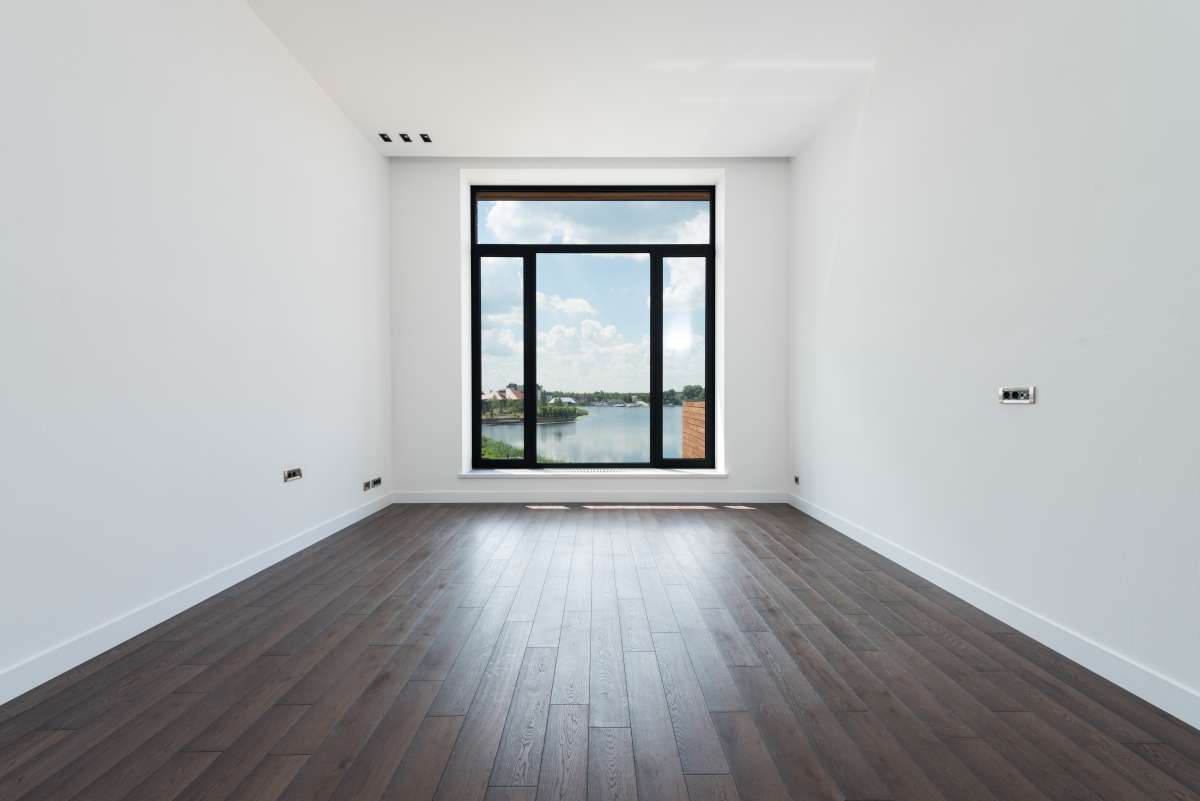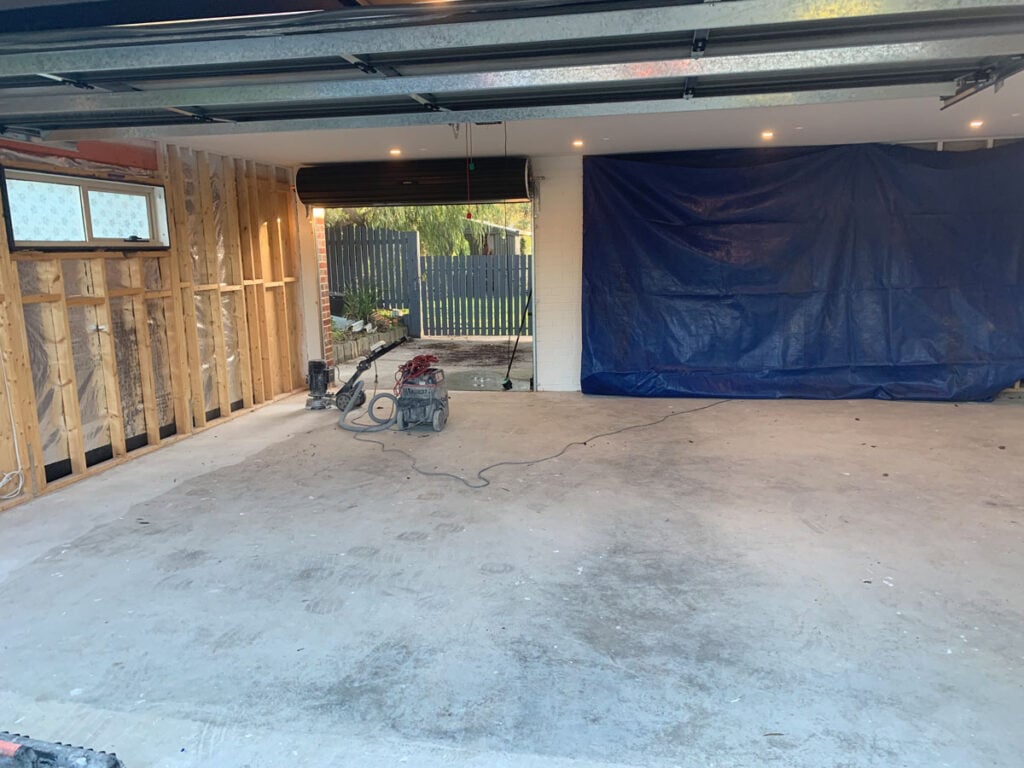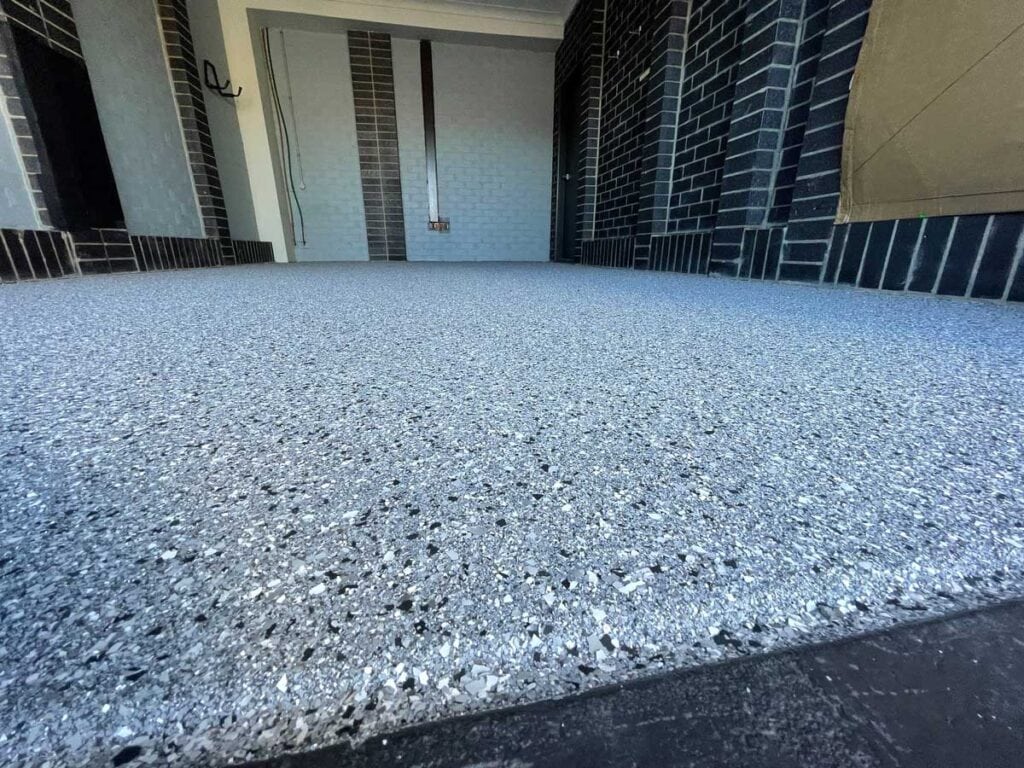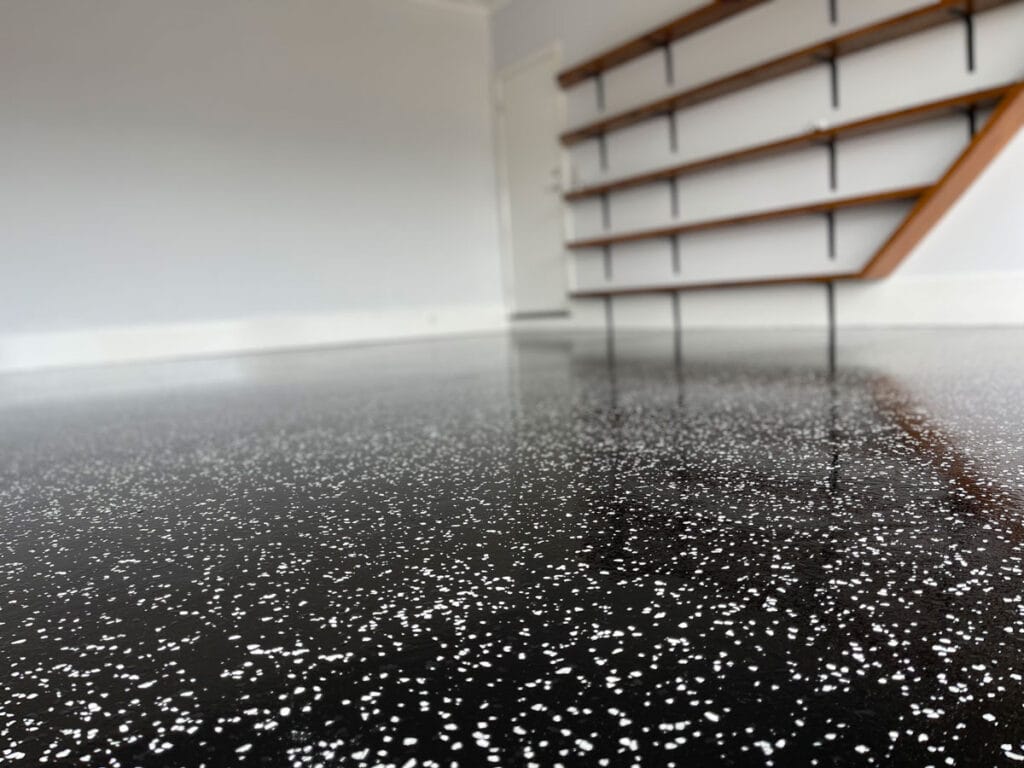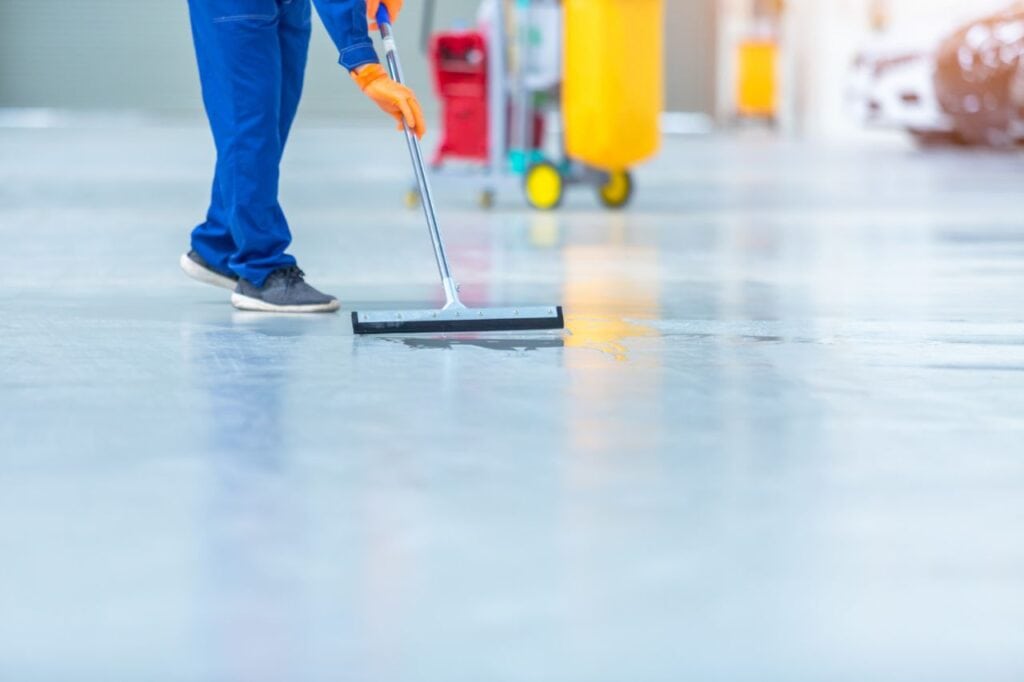Laminate flooring is a popular choice for homeowners due to its durability, affordability, and easy maintenance. However, one question that often arises is whether stains can be effectively applied to laminate floors.
Laminate flooring is typically designed with a protective top layer that mimics the appearance of wood, tile, or stone. This top layer acts as a barrier, protecting the underlying layers from wear and tear. Unlike hardwood flooring, which can be stained to alter its colour, laminate flooring is not made of natural wood. Therefore, the ability to stain laminate floors is limited.
When it comes to applying stains to laminate flooring, it's important to understand that the top layer of laminate cannot absorb the stain in the same way that wood can. Stains are designed to penetrate the porous surface of wood, enhancing its natural colour and grain. Since laminate lacks these natural properties, stains may not adhere properly or produce the desired results.
However, it's worth noting that there are certain types of laminate flooring specifically designed to resemble stained wood. These laminates have a photographic layer that replicates the look of the stained wood grain. These pre-stained laminate options can provide a realistic wood appearance without the need for additional staining.
If you have laminate flooring and wish to change its colour or give it a stained look, alternative options are available. One popular method is painting laminate flooring, which allows you to completely transform the appearance of your floors. Painting offers more control over color selection and can be an effective way to achieve the desired look without the limitations of traditional staining.
Before embarking on any project to alter the colour of your laminate flooring, it's crucial to consult the manufacturer's recommendations and warranty guidelines. Some manufacturers may advise against staining or painting laminate floors, as it can potentially void the warranty or lead to other issues.
Why Would You Paint a Laminate Floor?
Over time, even with proper care, laminate flooring can accumulate wear and tear or no longer match the desired aesthetic of a room. If you still need to prepare to invest in a new floor installation, painting over laminate flooring is a potential option. However, it is crucial to properly prepare the laminate flooring and use suitable types of paint to ensure satisfactory results.
It's important to note that painting over laminate flooring differs from our recommended approach. Painted laminate floors can appear messy once scratched, and the freshly painted look tends to fade quickly. Additionally, achieving a high-quality finish can be challenging. However, painted laminate flooring might suit your style preferences if you aim for a distressed or shabby chic appearance.
In the following instructions, we will outline how to paint laminate flooring and provide guidance on staining it to a darker shade (a less drastic transformation) or achieving a whitewashed effect.
Steps To Paint Laminate Flooring
Refreshing and transforming the aesthetic of your area can be as simple as painting your laminate flooring. However, proper process is essential for a positive outcome. From picking the perfect colour to the final sealant, we will walk you through the whole process of painting laminate flooring.
What is Laminate Flooring?
Laminate flooring is a type of synthetic flooring that consists of multiple layers of materials pressed together. The top layer is a protective coating that mimics the appearance of wood, tile, or stone. Underneath, there is a layer of high-density fiberboard (HDF) or medium-density fiberboard (MDF) that provides stability. Laminate flooring is known for its durability, affordability, and easy installation.
Choose a colour
A crucial consideration when painting laminate flooring is selecting an appropriate colour. Since laminate flooring has a transparent seal on top, it's impossible to remove the existing colour by sanding. Therefore, it's recommended to choose a darker colour that will effectively cover the original flooring.
Polyurethane paint is a popular choice for painting laminate floors due to its durability and final appearance. It is available in various natural wood tones and other colour options. When deciding on a colour, consider your style and the overall aesthetic of the space. Ensure that the chosen floor colour complements and harmonises with the existing design, including the colours of the walls, ceilings, and other decorative elements.
Prepare the Area
It's important to get rid of everything that could potentially get in the way of your painting before you even start. This will guarantee a spotless and uncluttered surface for painting.
Pay close attention to the edges and corners of the floor as these are likely to collect the most dust and debris. The project will benefit from a fresh start on a clean surface.
Repair Imperfections
Look for gouges, chips, cracks, and dents on the laminate flooring. You should take care of these initially if you want a flawless paint job.
Repair kits for laminate floors, or putty-like compounds, are widely available in hardware and home improvement stores. Fill the holes with putty and smooth them out with a putty knife. Please allow at least 24 hours for the patched areas to dry.
If repairing the laminate is not an option, then replacing it will ensure a uniform and high-quality appearance across the space.
Sand the Floor or Remove the Gloss
Laminate flooring must be stripped of its protective wear layer before it can be painted or stained. You can either sand the floor or use a de-glosser to achieve this effect.
Sand the entire floor with a machine, paying special attention to the patched areas, to ensure a uniform surface. Oversanding might cause holes in the laminate, so be careful. The desired result is an evenly scuffed floor across the room.
If you prefer a matte finish instead, you can de-gloss using a commercially available product and the directions that come with it. Using a de-glosser before to applying primer, paint, or stain can remove the protective wear layer and improve the flooring's receptivity to the coatings.
Remove Dust and Debris
Dust and dirt must be removed from the floor's surface before any paint or primer can be applied. You can accomplish this by scrubbing, dust-mopping, sweeping, or vacuuming.
The primer, stain, and flooring won't bind properly if there are any particles on the surface, therefore it's important to clean it first. Maintaining a spotless and shiny floor is essential.
Prime the Flooring
Next, an oil-based primer should be applied. Primers based on oil work best after sanding or removing gloss from the surface. It's important to get a nice, level coat of primer all over the floor so that the laminate or paint stain will adhere well.
Even while you can get away with just one, we recommend putting on two coats of primer. Give each coat enough time to dry. Adding a coat of primer over the laminate flooring helps smooth it out and seals any tiny surface flaws.
Apply the Paint
After sanding and priming the floor, you can begin painting. It's preferable to use too little paint than too much, so be conservative with your application. If extra protection is required, you can always apply it afterwards.
Allow the first layer to dry for at least an hour before adding a second. After the second coat has dried, evaluate the colour and add a third if you want it even darker. The floor needs at least a week to dry out before regular use to cure completely and attain its best state.
Use a Refinisher for Laminate Floors
A laminate floor refinisher, applied after the paint has set, brings out the wood's original hues while also serving as a clear protective layer.
Kits for repairing laminate floors are widely available at home improvement stores. By taking this extra measure, you can extend the life of your newly resurfaced floor and put off another refinishing job for a while.
Seal the Floor
Sealing the floor from water damage, prevent wear and potential cracking or flaking is the last and most important step after refinishing. The sealer will make the floor more resilient and long-lasting.
Use the same technique for applying the polyurethane sealant as you did for the floor's primer and paint. This will ensure uniform coverage. It's important to give the final sealant application plenty of time to dry before bringing furniture back into the room. The sealant will have dried and set properly, protecting your newly refinished floor to the fullest extent possible.
If you follow these directions carefully, you should be able to paint your laminate flooring and give your room a new lease on life. Make sure you pick the right colour, sand or de-gloss the floor, repair any flaws, clean the surface, apply primer and paint, use a refinisher, and seal the floor before you begin. Have fun walking on the freshly painted laminate!
Can I Use a Stain to Make My Laminate Floor Darker?
Transforming the look of your laminate flooring can be achieved through painting and staining it to achieve a richer colour. Choosing smoky shades can create a great effect in your rooms if you prefer a vintage aesthetic.
Staining laminate flooring follows the earlier steps, including thorough cleaning and sanding. However, instead of using traditional wood stains, you can purchase specialised laminate flooring finishes designed to work as stains. It's important to note that since laminate is not absorbent like wood, regular wood stain will not be effective.
Staining laminate flooring using a specialised finish offers a less dramatic change than painting, but the finish may need to be reapplied over time as the colour dulls. Additionally, you won't achieve the look of scratched paint, resulting in a more subtle transformation.
Alternatively, if you're looking for a darker tone, consider exploring new laminate flooring options, such as walnut laminate, which can provide the desired effect without staining or painting.
Why is Staining Laminate Less as Easy than Wood?
The reason for confusion and uncertainty surrounding the process of staining laminate flooring is mainly because laminate is made of something other than real wood.
Unlike real wood, laminate is not porous, which means it doesn't absorb stains similarly or respond well to traditional wood stains or paint. This is what makes staining laminate a bit more challenging.
Regular wood is porous and readily absorbs stains, allowing for a successful staining process. However, since laminate lacks porosity, it becomes difficult to achieve desirable results using regular wood stains. Instead, specialised laminate stains specifically formulated for this type of flooring are necessary to achieve the desired effect.
How to Keep Laminate Maintained
Once you have invested time and effort into painting or staining your laminate floors, it's important to maintain them properly to ensure their longevity. You can protect and preserve your refinished floors by following some care tips.
While the sealant and paint provide some water resistance, avoiding soaking the flooring with mop water is essential. Instead, dry mopping should be done regularly to remove dust and debris. A slightly damp mop can be used for deeper cleaning every 2 - 3 months. Spot treatment with soapy water is recommended for stubborn stains to avoid water damage.
It's important to avoid using harsh chemical cleaners or steam cleaning on laminate flooring as they can damage the top layer of sealant or cause warping of the wood-like fibre layer beneath the paint. Waxes and polishes should never be used on laminate flooring.
Abrasive tools like steel wool or certain vacuum attachments should be avoided to prevent scratches on the top sealant layer. Instead, opt for a soft-bristled broom or dust mop. Additionally, trimming your pets' nails can help protect the laminate flooring.
Doormats and area rugs are another effective way to minimize wear and tear on refinished flooring. They provide protection and help reduce the amount of dust and debris being tracked across the laminate surface.
How Do I Whitewash Laminate Floors?
Painting laminate flooring white has become a popular choice, particularly for achieving shabby chic, beach-inspired, or Scandinavian-themed decor. However, alternatives to painting the floor white are worth considering, as white paint can show signs of wear and scratches over time and may require regular touch-ups to maintain its pristine appearance. One option is to whitewash the laminate flooring, which involves mixing white paint with a clear coating for a translucent effect. This technique can work well with medium to lighter wood shades.
Alternatively, you can save yourself the trouble by choosing a white or light-coloured laminate flooring style from the beginning. White laminate flooring offers a clean and bright look, while grey and neutral tones are popular choices.
When it comes to white laminate flooring, keeping it clean is crucial. Unless you have the time and willingness to repaint the flooring white continuously, it's advisable to invest in a good-quality white laminate that is easy to clean and maintains its brightness over time.
Conclusion
Due to its long lifespan, low cost, and low care requirements, laminate flooring is a favourite among homeowners. However, because the top layer of laminate is not real wood, staining them is more difficult. However, there are varieties of laminate flooring that are made to seem like stained wood, creating the impression of real wood without the maintenance hassle. In addition, unlike conventional staining, painting laminate flooring can result in a noticeable change in hue. Before beginning any project to change the colour of the flooring, it is crucial to check the manufacturer's instructions and warranty standards.
Laminate flooring is an engineered flooring option that comprises a number of different layers pressed together. Its many admirers attest to its long life, low cost, and simple set-up. To get good results when painting, you must first thoroughly prepare the flooring and then apply the right kind of paint. Painted laminate flooring can be faded or whitewashed to create a shabby chic look. Colour selection, sealant selection, and matching the new floor colour to the existing decor are all important phases in painting laminate flooring.
The most crucial steps are priming the flooring with oil-based primer, sanding the floor to remove the sheen, cleaning the area thoroughly, and painting over any defects. This will guarantee a clean, clutter-free canvas on which to work. Hardware and home improvement stores typically stock laminate floor repair kits. Remove the protective wear layer by sanding or using a de-glosser on the floor. Scrub, dust-mop, sweep, or vacuum the floor to get it clean.
Apply an oil-based primer to the floor. Two coats of primer, paint, refinisher, and sealing the floor are the most crucial steps. Sanding and priming the floor can make it smoother and more durable. It's best to be sparing with paint and wait at least an hour between coats. Refinishers act as a transparent protective layer while bringing out the wood's natural tones.
The final step after refinishing is sealing the floor to prevent water damage and any cracking or flaking. It's crucial to wait until the sealant is completely dry before reintroducing the furniture. You may get a deeper tint by painting and staining your laminate flooring. Normal wood stains, however, will not work on laminate since it is not porous like wood. Adhering to some maintenance guidelines is essential for keeping laminate flooring in good condition.
Dust and debris may be removed with frequent dry mopping, and stains can be treated with a soapy water spot solution. Never use an abrasive pad on laminate flooring, and protect your newly refinished floors with doormats and area rugs. To "whitewash" laminate flooring, you can either choose a white or light-colored laminate flooring design from the get-go, or you can mix white paint with a transparent coating for a translucent effect. It is crucial to purchase high-quality white laminate that is simple to maintain and keeps its original brightness over time.
Content Summary
- Laminate flooring is popular due to its durability, affordability, and easy maintenance.
- Staining laminate floors is limited due to the protective top layer that mimics wood, tile, or stone.
- Stains designed for wood may not adhere properly or produce desired results on laminate.
- Some laminates are specifically designed to resemble stained wood.
- Painting laminate flooring is an alternative option to change its colour or achieve a stained look.
- Consult manufacturer's recommendations and warranty guidelines before altering laminate flooring.
- Painting over laminate flooring can be an option to refresh the aesthetic of a room.
- Proper preparation and suitable types of paint are crucial for satisfactory results.
- Painted laminate floors can appear messy when scratched and may fade quickly.
- Painting laminate flooring suits distressed or shabby chic styles.
- Steps to paint laminate flooring include colour selection, preparation, and repairs.
- Sanding or removing the gloss is necessary before painting laminate flooring.
- Dust and debris must be removed before applying paint or primer.
- Applying an oil-based primer is important for a good bond between laminate and paint.
- Polyurethane paint is recommended for painting laminate floors.
- Allow each coat of paint to dry before adding additional coats.
- A refinisher can be applied to bring out the original hues and protect the floor.
- Sealing the floor is crucial to prevent water damage and wear.
- Staining laminate flooring requires specialised laminate flooring finishes.
- Staining offers a less dramatic change than painting.
- Walnut laminate can provide a darker tone without staining or painting.
- Staining laminate is more challenging due to its lack of porosity.
- Regular wood stains are not effective on laminate flooring.
- Specialised laminate stains are necessary for achieving desirable results.
- Proper maintenance is important to ensure the longevity of painted or stained laminate floors.
- Avoid soaking laminate floors with mop water and opt for dry mopping.
- Harsh chemical cleaners and steam cleaning can damage laminate flooring.
- Use soft-bristled brooms or dust mops to prevent scratches.
- Doormats and area rugs help minimise wear and tear on refinished laminate flooring.
- Whitewashing laminate flooring is an alternative to painting it white, offering a translucent effect.
Frequently Asked Questions
Traditional staining requires a porous wood surface to absorb the stain into the finish. Since laminate furniture has a gloss finish, you can't technically stain it. But the good news is that you can paint over it with a faux stain that will be much more predictable and user-friendly than a traditional stain.
You can varnish the laminate flooring, but you cannot. Use an ordinary varnish for this. Special varnishes should be applied alternately in 3-4. layers, and they extend the life of the laminate by 2-3.
Painting laminate flooring offers a completely different look, but you can also stain your laminate flooring to give it a richer colour. Smoky shades can look great and add a vintage feel to rooms. Staining laminate flooring follows most of the steps above – so cleaning and sanding first.
Unfortunately, the answer is no; laminate floors are not waterproof (although certain brands falsely claim to be waterproof). However, most laminate floorboards are water resistant, meaning they can last significantly with water without absorbing moisture.
A water and vinegar solution is the best solution to clean your laminate. The all-natural mixture is safe for your home and family, affordable, and has disinfecting properties. Cleaning with this solution will bring the shine of your floor back and remove smudges and dirt.


